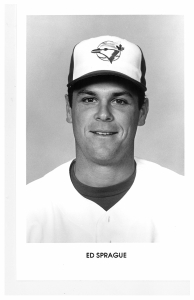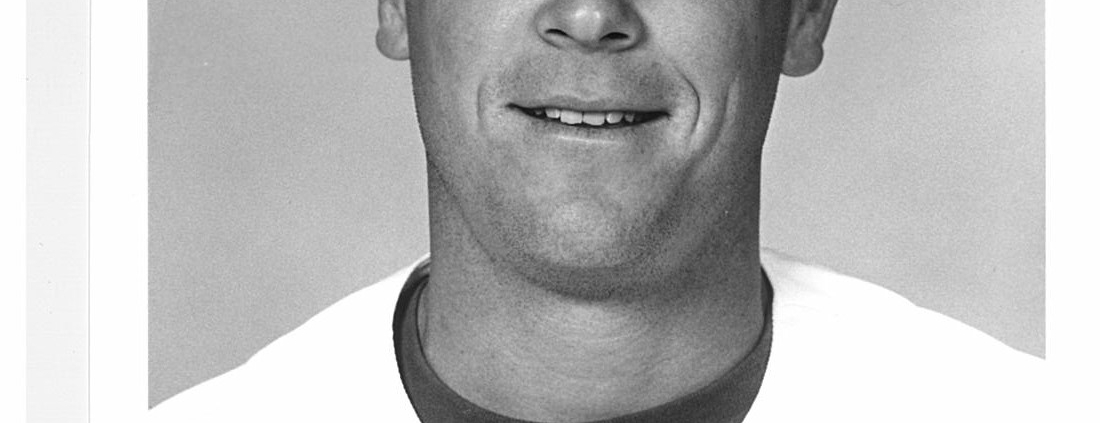September 6, 1992: An insignificant game of significance: Blue Jays pull ahead in AL East race
 They say that hindsight is 20/20.
They say that hindsight is 20/20.
This can be particularly true in baseball, as in other sports, where both the media and fans love to look back on games or seasons, and second-guess or debate plays, strategies, and outcomes. Sometimes, this hindsight will recognize a significance that was not apparent at the time.
Take for example, the game between the Blue Jays and the visiting Minnesota Twins on Sunday, September 6, 1992. Entering the game, the Jays were leading the American League East by a very slim one-half game. They were finishing a three-game series against the Twins and had won the first two games, 16-5 and 7-3. They had been playing well, having won seven of their previous 10 games; however, the second-place Baltimore Orioles were on a roll of their own. They had won seven in a row and nine of their previous 10 games, and had cut into the Blue Jays’ lead.
That Sunday marked the opening of the NFL season, and the US Open tennis tournament was in full swing, but an overcast, 75-degree afternoon attracted a capacity crowd of 50,421 fans to Toronto’s SkyDome to see the series finale. The open-roof game also provided an overhead air show, courtesy of the Canadian National Exhibition, which was just about to finish its annual season, about a mile down the road.
In 1992 the Minnesota lineup featured stars like Kirby Puckett (hitting .328 with an OPS of .868), Shane Mack (.326, .878), Chuck Knoblauch (.305, .752), Kent Hrbek (.244, .768), and Brian Harper (.301, .734). The defending World Series champion Twins were in second place in the American League West, 4½ games behind the Oakland Athletics but, having won six of their last 10, they had been gaining ground on the A’s, who had lost 7 of 10.
To be sure, this was an important game for both teams, but the real importance of that game for the Blue Jays would not be known until season’s end.
Todd Stottlemyre started for the Jays while Mike Trombley, a rookie, was making his second start ever for the Twins. The Blue Jays’ starting lineup was missing center fielder Devon White, who was nursing a sore thigh, and his regular backup, Derek Bell who was out with neck pain. Turner Ward started the game in center field. The Jays’ regular catcher, Pat Borders, was given the day off, and Ed Sprague was behind the plate. Sprague had spent most of the season with Triple-A Syracuse, but since his call-up had caught Stottlemyre’s previous two starts – both wins.
Stottlemyre made quick work of the Twins in the first inning, retiring all three batters he faced on 14 pitches, while Trombley retired the Jays in order as well, needing only 11 pitches.
The second inning proved more troublesome for the Jays starter. After he got Hrbek to line out to Roberto Alomar at second base, Stottlemyre’s first pitch to Mack was drilled into center field for a single, and Harper, on a 2-and-2 count, hit a home run to deep left field, giving Minnesota a 2-0 lead.
Dave Winfield hit a leadoff double in the bottom of the second inning, but the Jays couldn’t get him beyond third base.
Both pitchers then seemed to find their groove, and while each team managed to scatter a few hits along with a couple of walks, only one runner from either team made it as far as third base until the Blue Jays came to bat in the bottom of the seventh inning.
John Olerud led off the Jays half of the seventh by hitting a 0-and-1 pitch to deep left-center for a double. Candy Maldonado then walked on a 3-and-2 count. Turner Ward struck out, but the next batter, Sprague, smashed Trombley’s 100th pitch (on a 0-and-1 count) into the deep left-field seats, and the Jays were suddenly up 3-2. Trombley was allowed to remain in the game for one more pitch (which Alfredo Griffin deposited into right field for a double), then was replaced by Tom Edens.
“It just kind of rolled up there,” Trombley said, referring to the hanging slider Sprague hit over the fence. “It wasn’t a very good pitch. I’d like to have it back. I was pleased with the way I threw the ball during the game, but I still have to make a good pitch there.”1
His batterymate, Harper, said, “They scored four runs in an inning in all three of these games. And we couldn’t get a big inning of our own. It gets kind of frustrating.”2
Minnesota skipper Tom Kelly echoed Harper’s frustration. “It’s been a different guy for them every game. Did anyone think Sprague was going to hit a home run? If so, raise your hand. I certainly didn’t.”3
Edens was greeted by Alomar, who singled to right field, scoring Griffin. Further damage was averted when Edens picked off Alomar trying to steal second and, after walking Kelly Gruber, coaxed Joe Carter into grounding into a force out at second.
Stottlemyre came out to start the eighth inning for the Jays, but got into trouble by walking Knoblauch. After striking out Scott Leius, he gave up a single to Puckett, putting runners on first and second with one out. With Hrbek and Mack due up next, the Jays’ closer, Tom Henke, was brought in to relieve Stottlemyre, to try to get the final five outs. While Henke was the Blue Jays’ closer in 1992, it was somewhat unusual for him to be called upon to go more than one inning. In fact, for the season, Henke appeared in 57 games but pitched fewer than 56 innings.
After giving up a first-pitch single to Hrbek, Henke got Mack to ground into an inning-ending double play, Alomar to Griffin to Olerud. On that play, the Blue Jays apparently caught a break.
TV video replay of that play showed that Mack beat the throw to first. (In 1992, in-game appeals were not allowed, so umpire Ken Kaiser’s out call at first stood.) After the game, Henke said, “You gotta have a break once in a while.”4
In the ninth Henke set down the Twins in order on two groundouts and a pop fly. The Twins didn’t get the ball out of the infield and Henke had his 25th save.
Sprague’s three-run homer – his first home run since August 9, 1991 – had been the big hit. He contributed more than that, though, said starter Stottlemyre: “He’s had just as much to do with my last three wins as I have. Sprague’s been catching me like a veteran. I don’t lose anything when he’s behind the plate.”5
A tidy 4-2 Blue Jays win was completed in a compact 2 hours and 38 minutes.
Shortly after the Blue Jays’ victory, the California Angels, sitting in fifth place in the American League West, took on the Orioles in Anaheim. Behind the pitching of future Hall of Famer Bert Blyleven and two relievers, the Angels beat the Orioles 5-2 in 2 hours and 16 minutes, a time unheard of by today’s standards. (By comparison, the length of an average major-league baseball game in 2021 was 3 hours, 10 minutes, and 7 seconds.6)
The Blue Jays’ win, coupled with the Orioles’ loss, moved Toronto 1½ games ahead of the Orioles in the American League East. The third-place Milwaukee Brewers also lost, moving them 5½ games back of the Jays.
From September 7 to the end of the season, the Jays went 17-8, finishing at 96-66, 30 games over .500 and four games ahead of second-place Milwaukee. The Brewers finished very strongly, going 19-7 after September 6. to finish at 92-70. Meanwhile the Orioles, who had closed the gap to a half-game before the games on September 6, finished the balance of the season going 12-14 to finish a distant third at 89-73, seven games behind the Blue Jays.
Author’s Note
On a personal note, this author was at the September 6 game between the Blue Jays and the Twins. As I normally do, I scored that game and still have my handmade scorecard, to which I referred for the purpose of writing this article. I always try to make notes of anything noteworthy about any games – whether it be a spectacular play in the field, a disputed call, or anything to tweak my recollection of the game itself. Apart from noting that Stottlemyre’s first pitch to Knoblauch was a called ball, and Trombley’s first pitch to Alomar was grounded to Gene Larkin, I made no other notes on this game. Neither team made an error, each team hit a home run, and the Jays outhit the Twins 8-7. The Twins hit into two double plays, and the Jays were caught stealing twice. In the end, the Jays came back from a two-run deficit, scoring four in the seventh inning to win 4-2. There was nothing particularly remarkable about this game at all; however, that Sunday afternoon game was a significant moment in the season for the Jays.
What wasn’t known to me or any of the other 50,420 in attendance that afternoon, was that that day was the last time during the 1992 season that any team would be as close as a half-game behind the Blue Jays in the American League East standings. From the perspective of today, September 6 was a key turning point in the 1992 season.
As they say, hindsight is 20/20.
Sources
In addition to the sources cited in the Notes, the author consulted Baseball-Reference.com and Retrosheet.org.
https://www.baseball-reference.com/boxes/TOR/TOR199209060.shtml
https://www.retrosheet.org/boxesetc/1992B09060TOR1992.htm
Notes
1 Jeff Lenihan, “Again, Twins Can’t Beat Blue Jays’ Big Inning,” Minneapolis Star Tribune, September 7, 1992: 1C.
2 Lenihan.
3 Lenihan.
4 Tom Slater, “Powerful Battery Gives Jays Boost,” Toronto Star, September 7, 1992: D1.
5 Associated Press, “Blue Jays Escape Minnesota, 4-2,” Corpus Christi Caller-Times, September 7, 1992: D6.
6 Associated Press, “Average Time of Nine-Inning Games Sets MLB Record Despite Efforts to Improve Pace of Play,” ESPN.com, October 3, 2021. https://www.espn.com/mlb/story/_/id/32335481/average-nine-inning-games-sets-mlb-record-efforts-improve-pace-play. Accessed March 12, 2022.
Additional Stats
Toronto Blue Jays 4
Minnesota Twins 2
SkyDome
Toronto, ON
Box Score + PBP:
Corrections? Additions?
If you can help us improve this game story, contact us.


